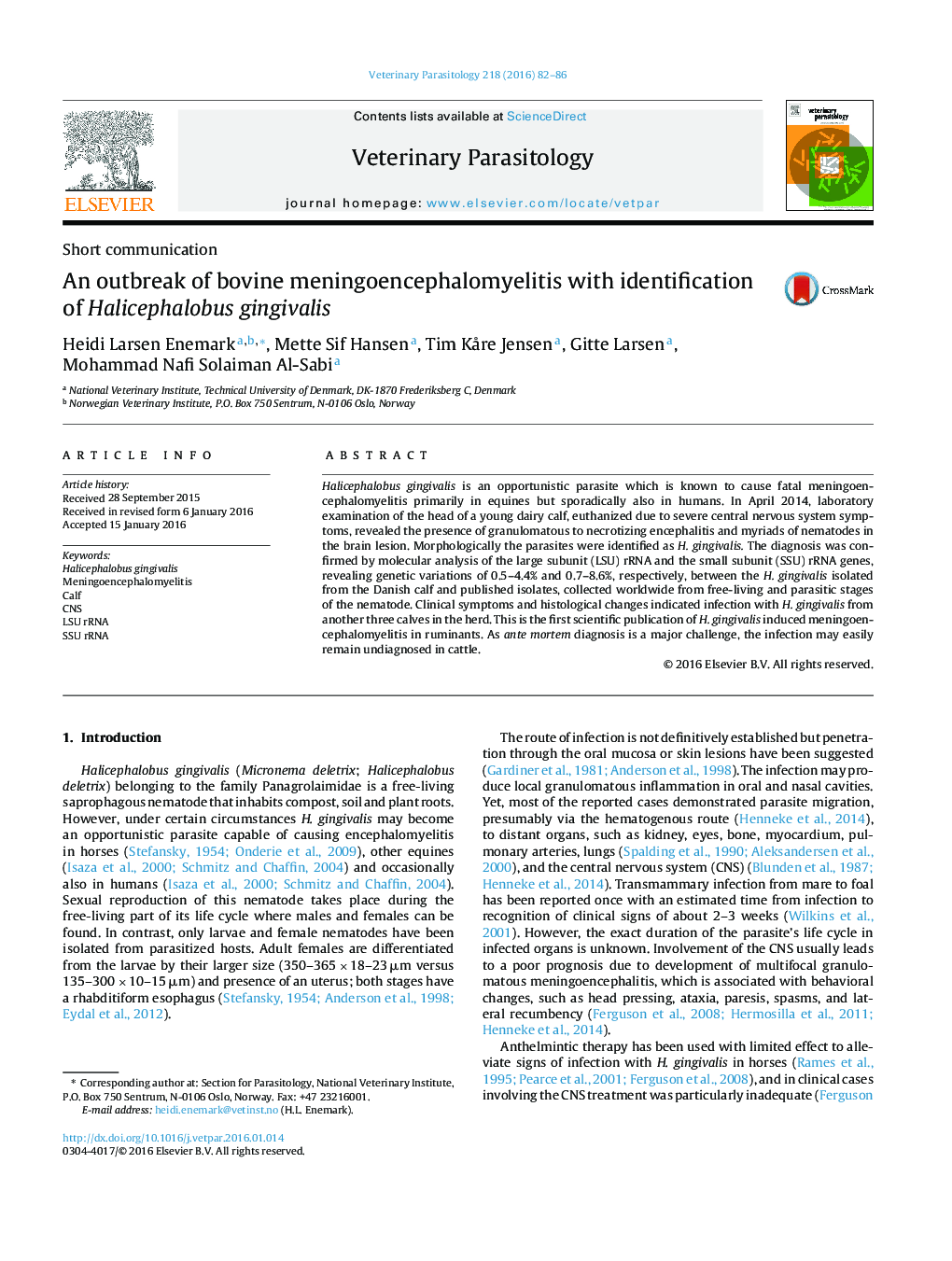| Article ID | Journal | Published Year | Pages | File Type |
|---|---|---|---|---|
| 2469899 | Veterinary Parasitology | 2016 | 5 Pages |
•Halicephalobus gingivalis (H.gingivalis) was detected in cattle.•Massive nematode infection was found in the CNS of a seven weeks old calf.•Histopathological changes in CNS of younger calves suggest parasitic etiology.•Detection of H.gingivalis in young calves suggest infection via the umbilicus or milk.•The isolate was similar to clinical and environmental H.gingivalis sequences in GenBank.
Halicephalobus gingivalis is an opportunistic parasite which is known to cause fatal meningoencephalomyelitis primarily in equines but sporadically also in humans. In April 2014, laboratory examination of the head of a young dairy calf, euthanized due to severe central nervous system symptoms, revealed the presence of granulomatous to necrotizing encephalitis and myriads of nematodes in the brain lesion. Morphologically the parasites were identified as H. gingivalis. The diagnosis was confirmed by molecular analysis of the large subunit (LSU) rRNA and the small subunit (SSU) rRNA genes, revealing genetic variations of 0.5–4.4% and 0.7–8.6%, respectively, between the H. gingivalis isolated from the Danish calf and published isolates, collected worldwide from free-living and parasitic stages of the nematode. Clinical symptoms and histological changes indicated infection with H. gingivalis from another three calves in the herd. This is the first scientific publication of H. gingivalis induced meningoencephalomyelitis in ruminants. As ante mortem diagnosis is a major challenge, the infection may easily remain undiagnosed in cattle.
